An important theme to come out of the Air & Space Forces Association’s main annual symposium this year was the unique mix of capabilities the new F-15EX Eagle II fighter offers and how those attributes will be in very high demand. Air Force leadership constantly spotlighted what the F-15EX will bring to the table, especially in the context of a Pacific fight.
The Eagle IIs are especially well-positioned to act as airborne controllers for future Collaborative Combat Aircraft and other drones, be launch platforms for hypersonic weapons and other large munitions, and provide new advanced electronic warfare capabilities. These roles are beyond its central counter-air focus and its task of helping to protect the U.S. homeland.
What isn’t being addressed is how the Air Force can hope to make the most of what the F-15EX has to offer with a planned fleet of just over 100 jets, many of which will be tasked primarily to perform the aforementioned homeland defense mission, especially in a time of major crisis or war.

The War Zone previously explored the many pitfalls of a truncated Eagle II purchase in great detail when the Air Force said it would only buy around 80 of the jets. The Air Force currently plans to acquire 104 Eagle IIs in total, still down from an originally planned minimum fleet size of at least 144.
As of the beginning of this month, the jet’s manufacturer, Boeing, had delivered two of them and was putting the final touches on a third, which was expected to be turned over to its new owner before October 1. Following various delays, Boeing now says it hopes to have five more of these aircraft in Air Force hands by the end of the first quarter of Fiscal Year 2024, which ends on December 31 of this year.
The Most Advanced F-15 Ever
The F-15EX is the most advanced version of the F-15 ever produced and is the latest variant in the Eagle family, which is now more than 50 years old. The jet’s current configuration includes the highly-capable AN/APG-82 active electronically-scanned array (AESA) radar and the powerful Eagle Passive/Active Warning Survivability System (EPAWSS) electronic warfare suite.

The F-15EX is expected to be able to carry the vast majority of air-launched munitions currently in U.S. Air Force inventory. It has already demonstrated its ability to employ AIM-120 Advanced Medium-Range Air-to-Air Missiles (AMRAAM), AIM-9X Sidewinder air-to-air missiles, and AGM-158 Joint Air-to-Surface Standoff Missile (JASSM) cruise missiles as part of a recently completed initial round of operational testing and evaluation.

“The F-15EX … has an extremely long range and has a massive weapons carriage capability,” Gen. Kenneth Wilsbach, head of Pacific Air Forces, the Air Force’s top command in that region, told The War Zone and other outlets at a roundtable on the sidelines of the Air & Space Forces Association conference earlier this month. “Some of the weapons that you can’t carry internally [on] a fifth-generation aircraft, you can put on the F-15EX.”
“That sort of gives you some incredibly long-range capability. Frankly, it can almost, not quite, but it can almost fill in where you might not have as many bombers as you’d like to have,” he continued. “This thing can carry so much ordnance, it definitely is [sic] the capability to move ordnance around the airspace and employ that ordnance, much like you would with a bomber. So that’s going to be quite effective.”
Open Architecture Focus
On top of its current capabilities, the F-15EX has been designed from the start with a focus on open architecture mission systems specifically to help speed up the integration of new and improved functionality in the future. One day those software updates might even go out to the jets in the middle of a mission.
Air Force Lt. Gen. Michael Loh, director of the Air National Gaurd, highlighted the open-architecture nature of the F-15EX and the potential for in-flight updating of its systems in the future as being especially notable capabilities that the Eagle II, among other platforms, offers at a separate media roundtable The War Zone attended at the Air & Space Forces Association conference.
“When we look at that platform [the F-15EX], the outer mold line, yes, it looks a lot like you know, the 1980s. But what’s inside is the sweet spot on that,” Loh said. “When you look at data information, when you look at computing power, when you look at the ability to rapidly change this [platform’s systems] that’s probably the sweet spot.”
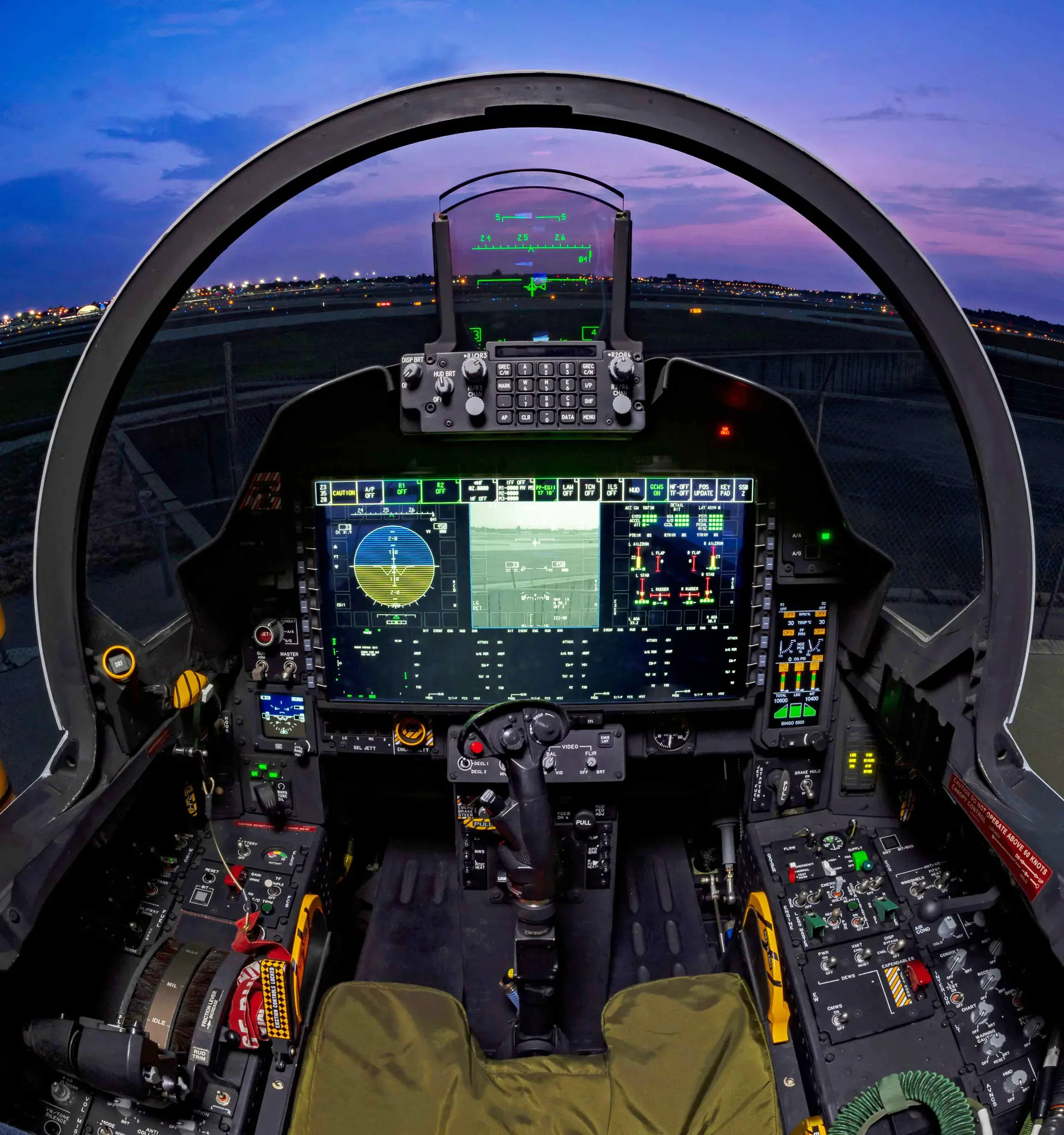
“When you look at the pre-Block F-16s that were out there, we took over the flight program years ago, and so we were able to write our own code. We’ve partnered with industry to come in and do some operational upgrades … and demonstrated the ability to do on-air reprogramming,” Loh added, offering a tangential example of what could also be in store for the F-15EX. “Now, when you look at the computing power [offered by] … AI [artificial intelligence and] ML [machine learning] … [the question] is now how can we rapidly reprogram our systems in order to get after a new threat?”
“Imagine doing it in real time,” he continued. “When I was an electronic combat pilot weapons officer, and I’m sitting there waiting for a tape to come out, [and] spending three months to reprogram, we’re talking about on air. Not something where I have to land, download, analyze it, put something back out there, and then get it back out to the field. That’s the goal.”
What Loh appears to be specifically describing here at the end is a concept called Cognitive Electronic Warfare, which the Air Force envisions as an important future capability for its new F-15EXs and existing F-15E Strike Eagles, as well as other platforms. You can read more about this concept in depth here.

Drones And Hypersonic Weapons
Boeing has long touted the F-15EX’s mix of capabilities as being relevant to a wide variety of potential mission sets. At the Air Force Association’s convention, Boeing representatives highlighted a number of expected forthcoming Air Force capabilities demonstrations that it feels the Eagle II is ideally suited to take part in.
“The current F-15EX and its capability capacity fulfills the F-15E and C model role[s],” Matt Giese, Boeing’s F-15 chief test pilot, who previously flew F-15s, as well as F-16s and F-22s, for the Air Force, also said at a Boeing press event at the Air & Space Forces Association conference Tuesday. “But probably more importantly, the capabilities allow us to do some more of the advanced missions, things like manned-unmanned teaming and hypersonics.”
“I don’t have specifics on dates or what the exact plan is, but I do know there’s a big push from the US Air Force to have some sort of manned-unmanned teaming demonstration,” according to Giese. “The EX is a perfect platform to do that, based on its payload capacity, its connectivity, … and the fact that we have a lot of gas, so we can stay airborne for a long time. … I would think that the U.S. Air Force would go in a direction at some point to use the EX kind of an initial manned-unmanned teaming platform.”

Not mentioned here is the additional fact that the F-15EX has two fully equipped cockpits. This would allow the pilot in the front seat to remain focused on flying the aircraft and leave controlling drones to the back-seater. Two-seat F-15E Strike Eagles have already been used to support Air Force crewed-uncrewed teaming and autonomy experimentation, as can be seen in the video below.

The Air Force has already been conducting increasingly complex teaming experiments involving multiple different types of crewed and uncrewed aircraft in the past few years. The service has made clear that this work is leading into its Collaborative Combat Aircraft (CCA) program, which is seeking to acquire many hundreds, if not thousands of advanced drones with high degrees of autonomy.
Initially, at least, the expectation is that those uncrewed aircraft will primarily work in close cooperation with crewed tactical combat jets, including the future sixth-generation stealthy combat jet being developed under the larger Next Generation Air Dominance (NGAD) program and the F-35A Joint Strike Fighter. The Air Force is now looking at the possibility of greatly expanded roles and missions for its future CCA fleets, which will also be able to operate on their own.
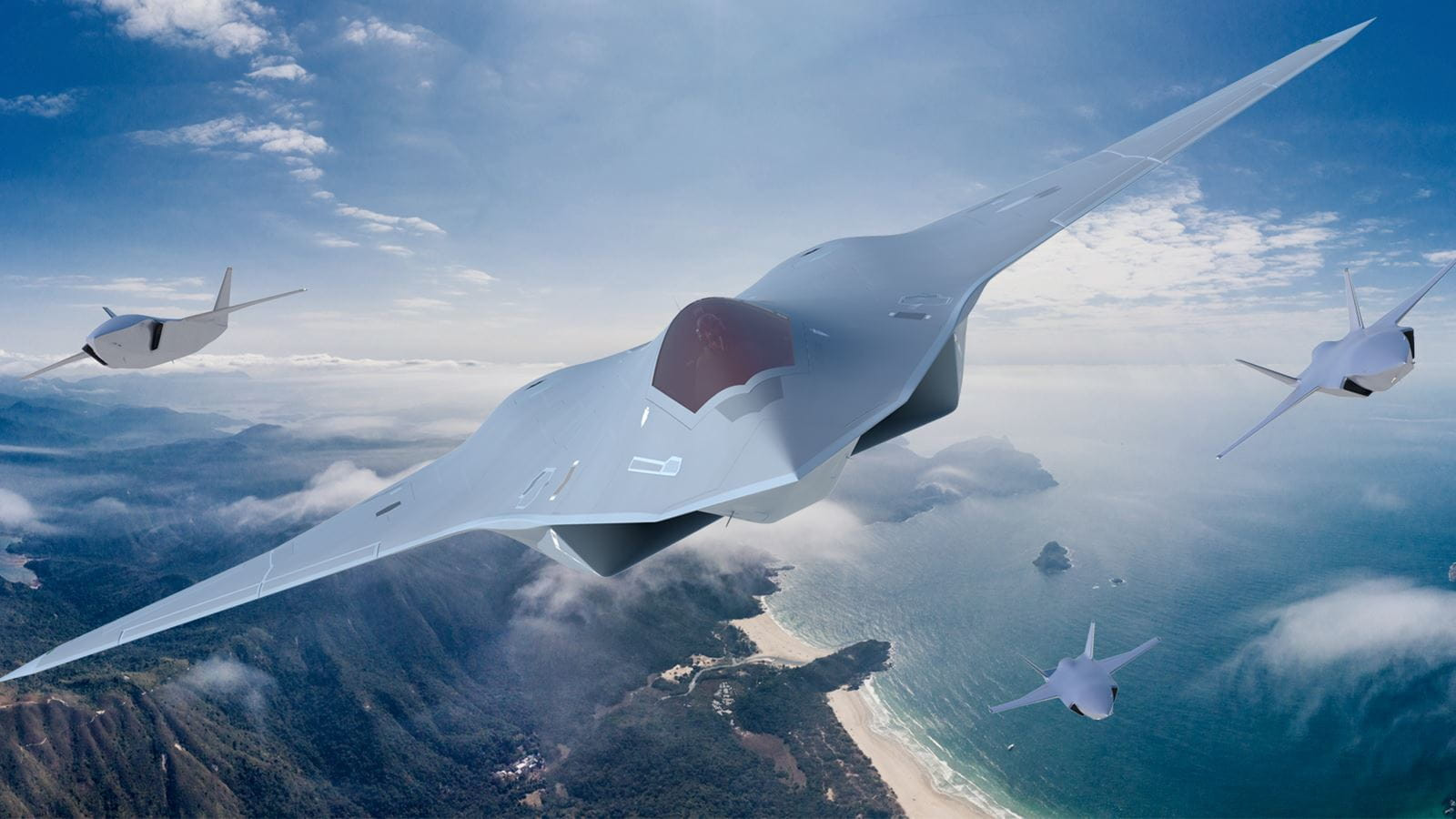
In addition, “the ability of the F-15[EX] to go high and fast, unlike any other platform in our [the U.S. Air Force’s] inventory” makes it “the prime candidate” to support “some sort of hypersonic test program,” Giese said. “I do know the Air Force is having discussions about that right now.”
The Air Force’s current main line of effort in this regard, at least publicly, is the Hypersonic Attack Cruise Missile (HACM), a now-in-development air-breathing hypersonic cruise missile. The U.S. Navy is also pursuing an air-launched hypersonic cruise missile optimized for anti-ship use that could also be suitable for future integration onto the F-15EX.
Air Force talking points about the service’s 2022 Fiscal Year budget proposal more generally described the F-15EX as “an outsized weapons truck” that could carry other future munitions that might be too big for other tactical combat jets to lug around, including an unspecified “outsize … air-to-air” weapon, according to a past report from Air & Space Forces Magazine. The air-to-air weapon referenced here is not believed to be the highly classified AIM-260 air-to-air missile, which is expected to have a similar form factor to the AIM-120 to allow it to be carried internally by stealth fighters like the F-22.
The F-15 series already has a long history of being used to carry and employ a wide variety of different large payloads, not limited just to weapons. The Eagle family already has a demonstrated ability to serve as an aerial platform for launching various types of drones, including ambitions for hosting loyal wingman types.
General Atomics notably included an F-15 variant in the background of a new rendering of its LongShot drone. That artwork was released along with the announcement on September 7 that the company had been selected to move to the final stage of the program and build a flying prototype. LongShot is a Defense Advanced Research Projects Agency (DARPA) effort that aims to produce a drone that can be armed with air-to-air missiles and be launched and then controlled by fighter and bomber-type aircraft in flight.

Though the expected dimensions and weight of General Atomics’ LongShot design are unknown at present, it seems very likely that it will be ideally paired with a tactical jet like the F-15EX with a heavier-than-usual load-carrying capacity. It would have to be carried externally, which would negate the stealthy characteristics of fighters like the F-22 and F-35, also making it more suitable to used in combination with something like the F-15EX.
In addition, the LongShot offers the launching platform significantly extended air-to-air weapons engagement ‘reach’ and a huge boost in tactical flexibility, dramatically increasing the aircraft’s survivability and lethality as a result. This could be highly valuable for non-stealthy aircraft and especially well suited for the Eagle II. Paired with all its other features, it could provide additional stark advantages even over 5th generation stealth fighters in the air-to-air fight.
Focus On Homeland Defense
If there is consensus among many in the Air Force about the potential breadth of capabilities the F-15EX can offer, it is not reflected in the service’s current force structure plans for these jets.
Of the six F-15EXs Boeing hopes to deliver by the end of 2023, four will join the Eagle II test force, and its two existing jets, at Edwards Air Force Base in California. The other two examples will head to Portland to join the Oregon Air National Guard.

“F-15EX is going to field to Portland, going to field to Fresno, and going to field to New Orleans,” Air National Guard Director Lt. Gen. Loh reiterated during his roundtable at the Air Force Association’s symposium.
The Oregon Air National Guard’s 142nd Wing in Portland has long been set to be the first operational unit equipped with F-15EX. The Air Force announced earlier this year that the California Air National Guard’s 144th Fighter Wing in Fresno and the Louisiana Air National Guard’s 159th Fighter Wing in New Orleans would also be getting Eagle IIs.

All three of these Air National Guard units are and will continue to be tasked with air-to-air centric missions, including the homeland defense commitment. The trio of units currently operates older F-15C/D Eagles.

It is worth noting that the Oregon Air National Guard has another F-15C/D unit, the 173rd Fighter Wing, which is currently the schoolhouse unit for the F-15C/D Eagle. The plan now is to convert this wing into an F-35A Joint Strike Fighter training unit and fold F-15EX training in with the existing pipeline for the F-15E Strike Eagle. The size of the F-15E fleet, which is more focused as a community on conducting strike missions and is in extremely high demand, is also set to be slashed by more than half in the coming years.
“We’ve had an enterprise of F-15Cs [and Ds] and F-15Es, and we’re emerging with F-15EX,” Gen. Mark Kelly, head of the Air Force’s Air Combat Command (ACC), explained earlier this month. “That [old multi-part] enterprise will merge into kind of one singular F-15 enterprise, whether it be from a formal training unit/weapons school/test enterprise, as the oldest F-15C’s [retire].”
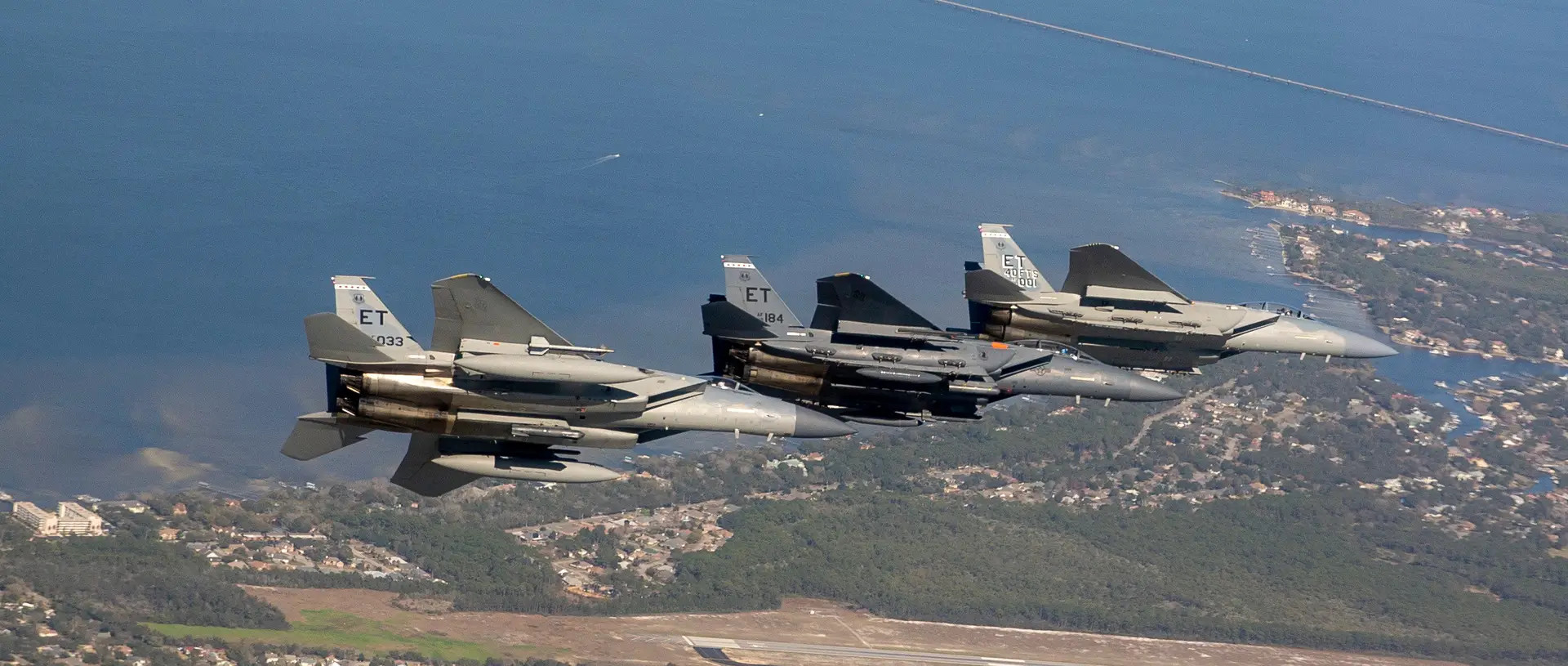
ACC oversees the bulk of the Air Force’s active-duty tactical combat jets, among other fleets. Kelly was speaking at another roundtable for media, including The War Zone, at the Air & Space Forces Association conference.
The Air Force’s stated plan currently is to replace all of its remaining older Eagles by 2026 with a mixture of F-15EXs and F-35As.
A redacted Pentagon Selected Acquisition Report (SAR) on the F-15EX, dated December 2022, which was just recently released, says the hope at that time was that the Air Force would reach Initial Operational Capability with the type by the end of this month. This seems unlikely to happen now given that a key stipulation for the IOC declaration is having eight jets on hand, but could still happen by the end of the year if Boeing holds to its current delivery schedule. The program’s “baseline” requirements say that this milestone should be achieved no later than July 2024.
The SAR also says that the goal is for the Air Force to reach Full Operational Capability (FOC) with the F-15EX sometime between 2026 and 2027, after the service has received 44 Eagle IIs and various ancillary equipment.
Just A Pocket Fleet
A more comprehensive picture of the Air Force’s planned F-15EX fleet and how it will be distributed has emerged this year. It is known that the three Air National Guard units that will be equipped with the type are set to receive 18 jets each. At least some of the six test jets are likely to remain in that capacity and a number of additional jets will be required to support the merged F-15E/EX training enterprise.
Still, this still leaves the Air Force’s plans for roughly two squadrons worth of Eagle IIs unknown. Air National Guard head Lt. Gen. Loh did not indicate he was currently expecting to see any more Eagle II units on his end when asked about this possibility this at the AFA symposium.
One option would be for the balance of the planned F-15EX acquisitions to head out to the Pacific to join Gen. Wilsbach’s PACAF. That command is in the process of losing two squadrons of F-15Cs, which had been forward-based at Kadena Air Base in Japan, and no replacement plans have been disclosed so far. Instead, smaller contingents of fighters from across the USAF will forward deploy to Kadena on a rotational basis to back-fill the F-15C/D’s contingency and alert mission. Considering how stretched the USAF’s shrinking fighter force is, this is a big resource drain.
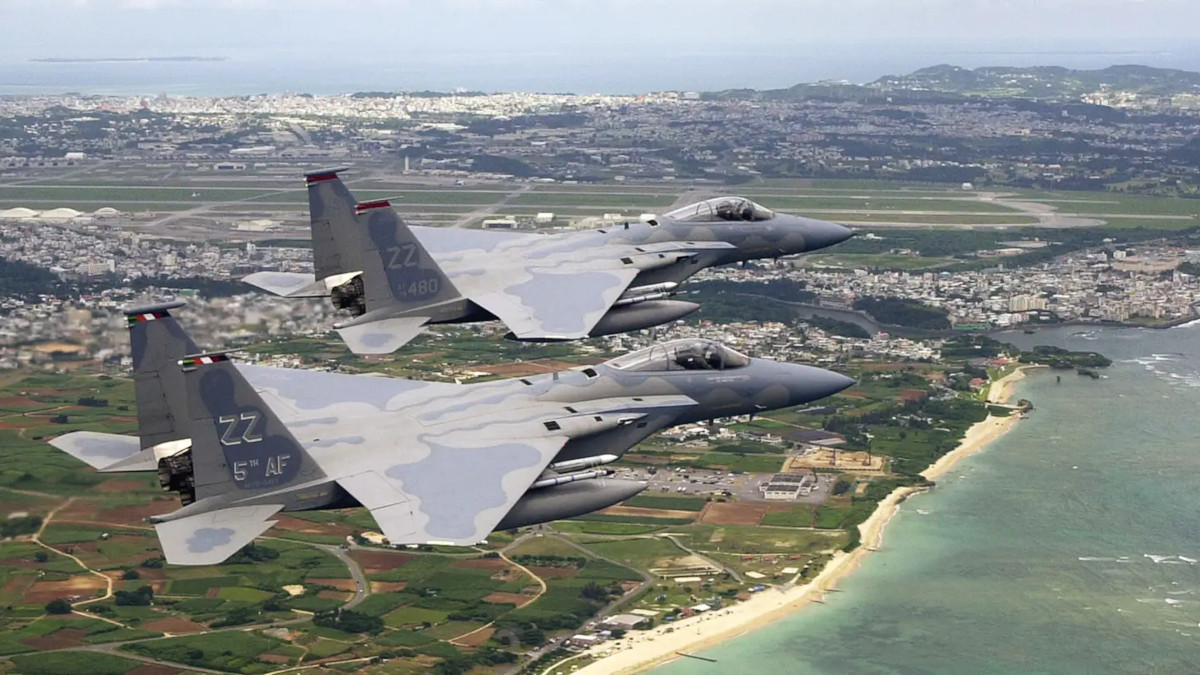
As already noted, Wilsbach has been a particular advocate for the F-15EX. He regularly touts how its capabilities could be useful in the Pacific, especially in a potential future high-end conflict against China, just as he did this week.
Even if PACAF, or any other Air Force command focused on missions outside of homeland defense, does get the remaining unassigned F-15EXs, questions persist about whether the service will be able to make the best use of what they have to offer. Particularly in the context of a potential future high-end against China, the Eagle II fleet would amount to dozens of jets in a battlespace with thousands of friendly aircraft, crewed and uncrewed, and at least a similar number on the opposing side. Even with their generous endurance, just dozens of Eagle IIs cannot be everywhere at once, especially in a particularly broader theater of operations like the Pacific.
At the Air & Space Forces Association conference, PACAF’s Gen. Wilsbach and other Air Force officials repeatedly highlighted this reality and the resulting need for what the service is calling “affordable mass” to meet this challenge. This is a key driver behind the Collaborative Combat Aircraft (CCA) program. The Air Force already wants at least 1,000 of these drones to team with its future sixth-generation crewed Next Generation Air Dominance (NGAD) combat jets and fifth-generation F-35As. However, it is already looking at a much larger total fleet size and expanded roles and missions, including ones outside of the tactical air combat arena.

This all certainly re-raises many of the same cost/benefit and other questions The War Zone explored in depth when it appeared that the Air Force was only going to purchase 80 Eagle IIs.
There remains the potential for more active blending of the F-15EXs in some way with the existing F-15E Strike Eagle fleet and its mission sets. There had been talk for a time about outright replacing all of the F-15Es with EXs. This could also help reduce the operational strain on the latter and would not necessarily be a major problem training-wise given the current plans to combine the E and EX pipelines.

“I think all of the training stuff is still to be determined. Like they’re still talking about it and what they’re going to do and how they’re going to approach it,” Matt Giese, Boeing’s top F-15 test pilot, said at the company’s press event this week in response to a question about the Air Force’s training plans. “The syllabus for the [F-15]E … is in several stages. The first stage is what we call the contact phase, where just want to [have pilots] fly the jet. That’s transferable between the [F-15]EX and E.”
“The second phase, which is really the air-to-air phase, … that is transferable, too,” he continued. “You just might do more of something than you would [for one of the other jet], you know, going and dropping bombs in the range. … A lot of what the EX will do from the air-to-air side, we already do.”
Giese added that he felt the latter phases of the training could be reasonably prioritized around one mission set or another and that any issues arising from specific differences between the E and EX’s hardware could be mitigated by using simulators on the ground.
Of course, none of this changes what also stands to be lost by the Air Force’s separate plans to cut the F-15E fleet, which could see it divesting 119 of its 218 Strike Eagles by the 2028 Fiscal Year. Adding 104 F-15EXs to the mix doesn’t make up the difference, and the 104 jets are supposed to replace F-15C/Ds at non-Strike Eagle units. As already noted, the Strike Eagles are some of the service’s most in-demand aircraft due to the same kinds of speed, range, and payload benefits that the Eagle II is only set to build upon.
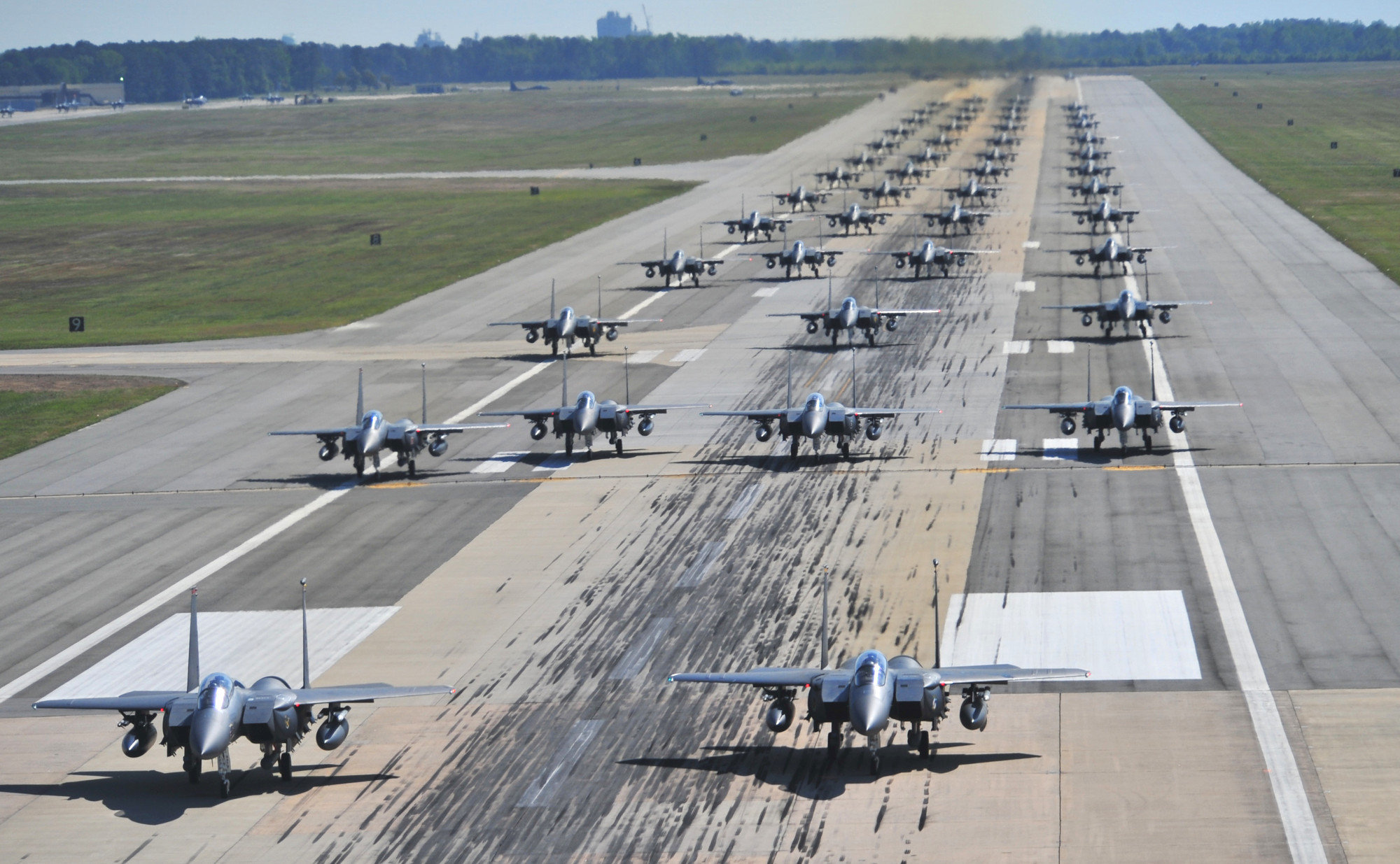
A Coming Debate
Though he would not speak directly about additional Air National Guard F-15EX units at this year’s Air & Space Forces Association conference, Lt. Gen. Loh did indicate he thought Eagle II’s future with the Air Force was not necessarily settled and that the final fleet size could increase beyond 104 aircraft.
“When you look at the fighters that are in production right now, in the United States, you have the F-35, and you have the F-15EX, and you still have F-16s for foreign militaries. So, those are the three that are currently in production,” he said. “When you look at the [U.S.] National Defense Strategy, and … the defense ecosystem, would you put another fighter in production? … So I think that’s the debate that’s going to go on now.”
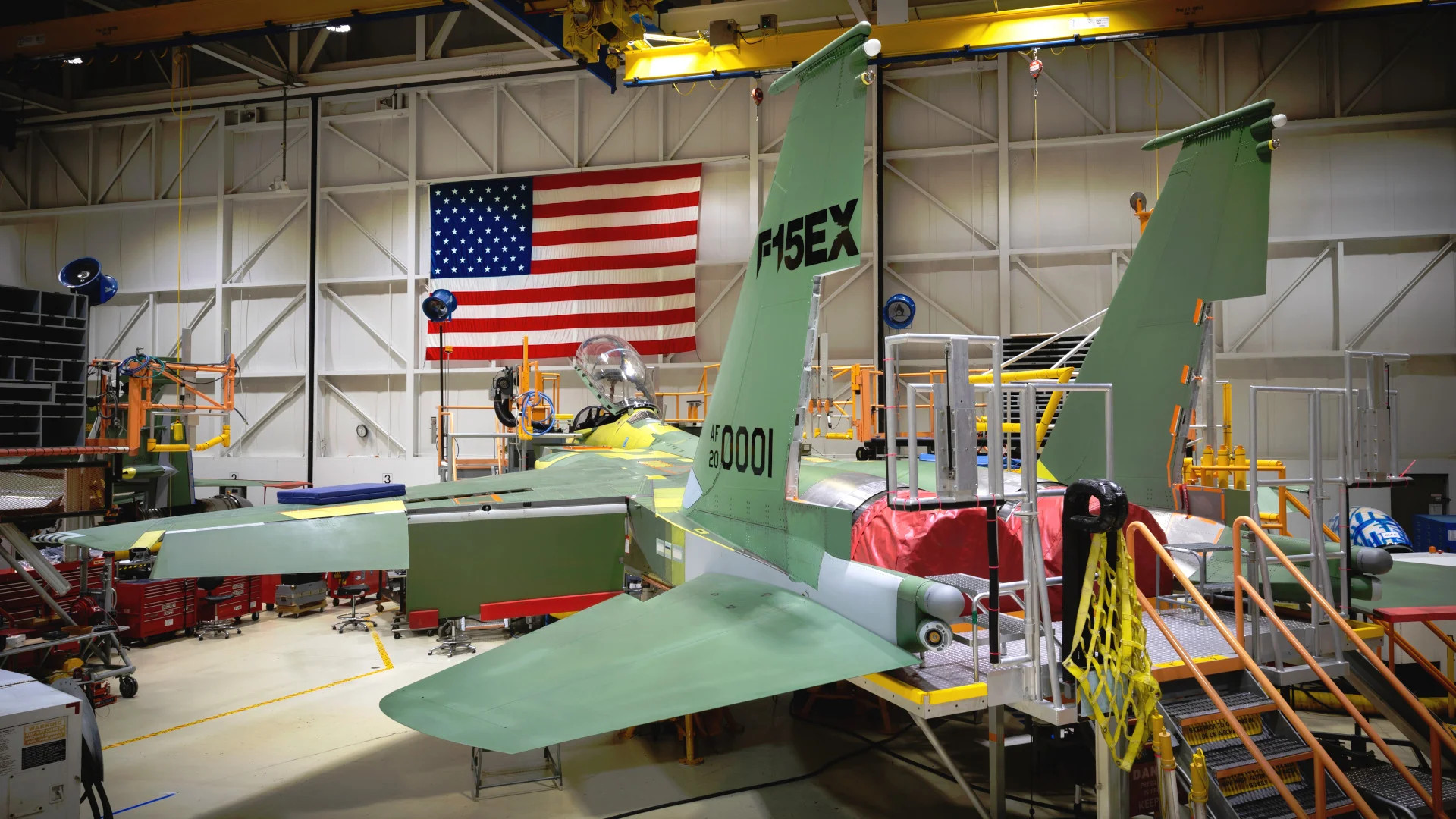
Loh brought up that Boeing is planning to shutter production of the F/A-18E/F Super Hornet in 2025.
On top of that, the Air Force is currently only planning to acquire 200 of the future sixth-generation NGAD combat jets, and each one is expected to be immensely expensive. The War Zone has raised the possibility in the past that this sixth-generation ‘fighter’ may be the last newly designed crewed tactical combat jet the Air Force ever buys.
There is still the matter of competing interests between spending to acquire more fifth-generation combat jets, like the F-35, and advanced fourth-generation ones like the F-15EX. After what was originally referred to just as the F-15X first emerged back in 2018, which The War Zone was first to report on in detail, Air Force officials repeatedly stressed that it was complementary to the F-35 and not a competitor budget-wise.

This calculus has all further changed in the past few years with the Collaborative Combat Aircraft (CCA) program, which could breathe whole new levels of capabilities and life into 4th generation fighters.
What this all means, of course, is that if the Air Force does decide to expand its crewed tactical jet fleets, it will have limited options and fewer still that are cost-effective to purchase on any appreciable scale. Given the service’s stated requirements and capability demands, there remains a possibility that it could circle back around to F-15EX. If it doesn’t, questions are very likely to persist about the long-term future of the 104 it expects to buy now.
Boeing is certainly hoping to keep the F-15EX, or variants and derivatives thereof, in production for the foreseeable future. In August, Indonesia made a formal commitment to buy 24 F-15IDs, derivatives of the F-15EX, and Poland has an interest in purchasing some number of Eagle IIs. Long-time F-15 operator Israel has often come up in discussions about F-15EX exports in the past.
The global F-15 community otherwise continues to be robust with major operators in Asia (Japan, Singapore, and South Korea) and the Middle East (Saudi Arabia and Qatar, in addition to Israel). The Saudis and Qataris are already flying some of the most advanced Eagles outside of the United States. The F-15EX was derived directly from the F-15QA for Qatar.

Japan is in the process of upgrading a portion of its F-15J fleet to what is currently referred to as the Japan Super Interceptor (JSI) configuration. JSI will include a number of the same features as the EX, including the AN/APG-82 radar and EPAWSS electronic warfare system. South Korea is modernizing its F-15Ks, too.
At least currently, when it comes to the Air Force’s F-15EX plans, it is hard not to see a disconnect between how the service presents the value of its future Eagle IIs and what such a small fleet of tactical jets will actually be able to offer. This is especially true in a time of conflict when many of the Eagle IIs will be needed to protect the homeland and a portion of the fleet will be down for maintenance, as is normal at any given time. This would likely leave around half of the 104 F-15EX fleet, give or take, available for deployment.
That’s not a lot of capacity for so many missions the jet is supposedly uniquely capable of executing over what could be the largest theater of operations since WWII. As such, either more Eagle IIs will need to be procured or expectations as to what their mission set will comprise of will need to be severely tempered.
Contact the author: joe@thedrive.com
